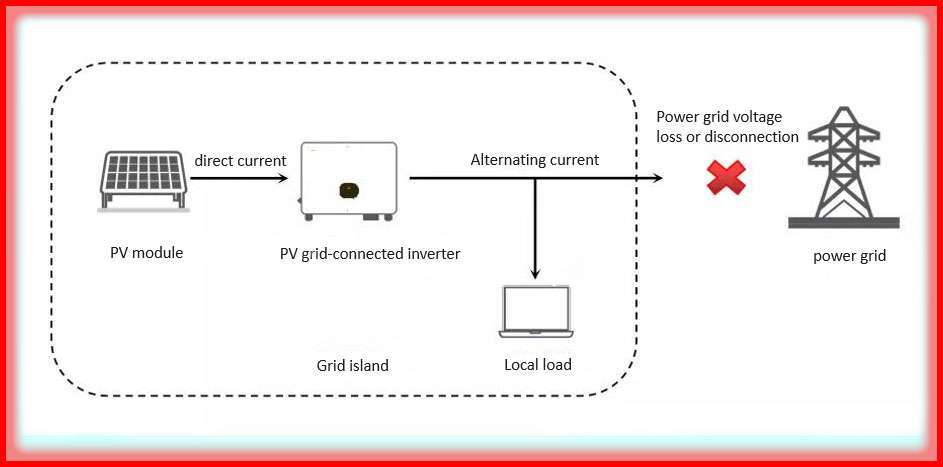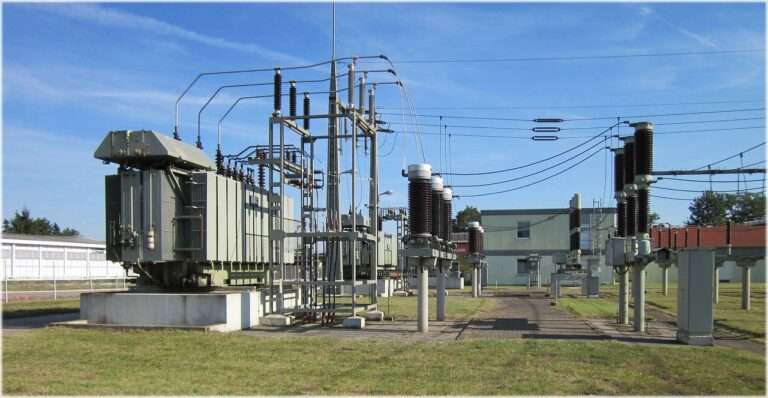Anti-Islanding Protection: Safety in Solar Power Systems
In the rapidly evolving world of renewable energy, solar power has emerged as a frontrunner in the quest for sustainable electricity generation. As more solar installations are integrated into the grid, the importance of safety mechanisms has become paramount. One crucial safety feature that often goes unnoticed by the general public, yet is indispensable for engineers and technicians, is Anti-Islanding Protection. This article delves into the intricacies of this vital safeguard, exploring its significance, functionality, and implementation in modern solar power systems.

Table of Contents
Understanding the Concept of Anti-Islanding Protection
At its core, Anti-Islanding Protection is a safety mechanism designed to prevent solar inverters from feeding power into the grid when the main power supply is disconnected. This situation, known as “islanding,” can pose significant risks to utility workers and equipment. The term “island” in this context refers to a portion of the electrical system that becomes isolated from the main grid but continues to be energized by local power sources, such as solar panels.
The Risks of Islanding
To fully appreciate the importance of Anti-Islanding Protection, it’s crucial to understand the potential hazards of an islanding situation. When a section of the grid becomes disconnected from the main power supply, utility workers may assume it’s de-energized and safe to work on. However, if solar inverters continue to feed power into this isolated section, it creates a dangerous environment where unexpected live circuits can cause severe injuries or even fatalities.
Moreover, islanding can lead to equipment damage due to voltage and frequency fluctuations. Without the stabilizing influence of the main grid, the isolated section may experience power quality issues that can harm sensitive electronic devices connected to the system.
How Anti-Islanding Protection Works
Anti-Islanding Protection systems employ various detection methods to identify when the grid connection has been lost. These methods can be broadly categorized into passive and active techniques, each with its own set of advantages and limitations.
Passive Anti-Islanding Methods
Passive methods rely on monitoring grid parameters such as voltage, frequency, and phase. When these parameters deviate significantly from their normal ranges, it triggers the inverter to shut down. While passive methods are simple and cost-effective, they may have difficulty detecting islanding conditions when the local load closely matches the power output of the solar system.
Active Anti-Islanding Methods
Active methods, on the other hand, involve the inverter deliberately introducing small disturbances into the system and monitoring the response. In a grid-connected state, these disturbances are quickly absorbed. However, in an islanded condition, they lead to detectable changes in system parameters. Active methods are generally more reliable but can slightly reduce system efficiency and power quality.
Implementing Anti-Islanding Protection in Solar Power Systems
The implementation of Anti-Islanding Protection is a critical aspect of solar inverter design and installation. Modern inverters come equipped with built-in anti-islanding functionality, adhering to strict standards and regulations set by governing bodies in different countries.
Standards and Regulations
In the United States, for example, the IEEE 1547 standard provides guidelines for the interconnection of distributed resources with electric power systems. This standard specifies the requirements for anti-islanding protection, including the maximum time within which an inverter must detect an islanding condition and cease to energize the area.
Similarly, in Europe, the EN 50549 standard outlines the requirements for generating plants to be connected in parallel with distribution networks. These standards ensure that solar power systems operate safely and reliably when integrated into the larger electrical infrastructure.
The Future of Anti-Islanding Protection
As solar technology continues to advance, so too does the field of Anti-Islanding Protection. Researchers and engineers are constantly developing new methods to improve the speed and accuracy of islanding detection while minimizing false positives that could lead to unnecessary system shutdowns.
One promising area of development is the use of artificial intelligence and machine learning algorithms to enhance the decision-making capabilities of anti-islanding systems. These advanced techniques could potentially allow for more nuanced responses to grid anomalies, improving overall system stability and reliability.
Technical Insights: What Engineers Need to Know
From an engineering perspective, several technical aspects of Anti-Islanding Protection are particularly noteworthy. One key consideration is the selection of appropriate detection methods based on the specific characteristics of the solar installation and the local grid. Factors such as the size of the solar array, the nature of local loads, and the grid stability in the area all play a role in determining the most effective anti-islanding strategy.
Another important technical insight relates to the coordination between multiple inverters in larger solar installations. In these scenarios, engineers must ensure that all inverters respond coherently to islanding conditions, avoiding situations where some inverters shut down while others continue to operate.
Additionally, the integration of energy storage systems, such as batteries, introduces new complexities to anti-islanding protection. Engineers must design systems that can safely transition between grid-connected and off-grid modes without compromising the integrity of the anti-islanding mechanisms.
Lastly, it’s worth noting that while Anti-Islanding Protection is crucial, it’s just one component of a comprehensive solar power system design. Engineers must also consider other performance metrics, such as the Performance Ratio (PR) of the solar power plant. The PR, which measures the overall efficiency of a solar installation, takes into account various factors including inverter efficiency, cable losses, and environmental conditions. Understanding how to calculate and optimize the PR is essential for maximizing the output and cost-effectiveness of solar power systems.
In conclusion, Anti-Islanding Protection represents a critical intersection of safety, technology, and regulatory compliance in the solar energy sector. As the industry continues to evolve, staying abreast of the latest developments in this field will be crucial for engineers and technicians alike, ensuring that solar power remains a safe, reliable, and increasingly prevalent source of clean energy.
Conclusion
Anti-Islanding Protection may not be the most glamorous aspect of solar power technology, but its importance cannot be overstated. As we continue to transition towards a more sustainable energy future, the safety and reliability of our power systems become increasingly critical. By ensuring that solar installations can seamlessly integrate with the existing grid infrastructure without compromising safety, Anti-Islanding Protection plays a vital role in building public trust and accelerating the adoption of renewable energy technologies.
For engineers and technicians working in the solar industry, a deep understanding of Anti-Islanding Protection is essential. It not only ensures compliance with regulatory standards but also contributes to the overall safety and efficiency of solar power systems. As we look to the future, continued innovation in this field will undoubtedly play a crucial role in shaping the landscape of renewable energy.
Worth Read Posts
- Power Transformer Testing
- Power Transformer Parts
- Hysteresis Loss and Eddy Current Loss
- Derivation of Hysteresis Losses
- Transformers: Important Types, Features & Components
- Transformer Tests Before Commissioning
- Transformer Electrical Interview
Follow us on LinkedIn, “Electrical Insights,” to get the latest updates on electrical engineering. For the latest jobs follow us on “Jobs Corner“.





